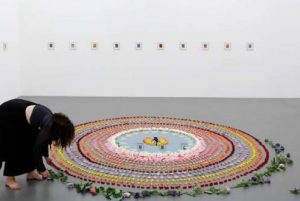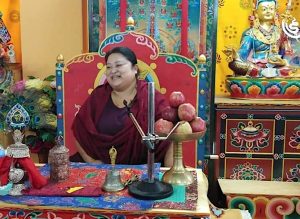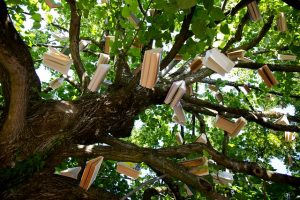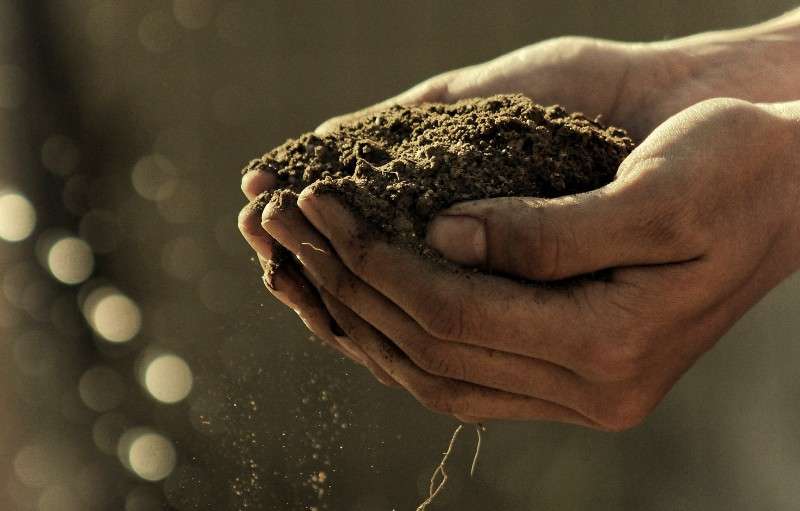
The trees, grasses, and land involved in this all emit a bright and shining light, and preach the profound and incomprehensible dharma which is endless. Trees and grasses, wall and fence expound and exalt the dharma for the sake of ordinary people, sages, and all living beings. Ordinary people, sages, and all living beings in turn preach and exalt the dharma for the sake of trees, grasses, wall, and fence . . . (“Jijuyu Zanmai” by Eihei Dogen Zenji)
My office window looks out onto the temple vegetable patch, which for months has been a chaotic scene of weeds, raggedy kale plants, and the heaps of compost our garden volunteer deposited onto it before Christmas. We’ve kept meaning to offer it attention, but other things have taken priority. This week my husband cleared it and spread out the mounds of dark, rich compost. It looks inviting, ready for spring sowings.
Dogen tells us that trees and grass, wall and fence, all expound and exalt the Dharma. How much Dharma is held in the soil of the vegetable patch, like minerals? What is this bare patch of ground teaching me right now? How is the Buddha lighting it up from inside, illuminating what needs to be illuminated?
Here is my first teaching. The thought arises: all the vegetables we plant this year will have such short lives. Their season is limited, just like mine. I don’t want to be a being with a limited season. Parts of me rail against the idea of struggling into fullness from a tiny seed, weathering drought and storms to enjoy a brief blossoming and fruiting before fading and dissolving once more into the earth. And yet, this is how it is in this world of samsara. I have a longer season than most plants, and less than many trees—seventy or eighty revolutions of the Earth if I am lucky. It feels too short, and what a waste of all that energy for the whole thing—my projects, my story, my flesh—to simply decay at the end of it all.
As I encounter the discomfort of this thought, the vegetable patch speaks to me. It reminds me that the fruit of my efforts will not be lost, but recycled into fresh expressions of the Dharma. Last year’s potatoes fed our community here, and contributed to their offerings to the world. The old kale plant will dissolve into compost and contribute to more kale, or maybe it will nourish some of those shockingly orange nasturtiums. Maybe some of my books will live into the decades beyond my lifespan, but if they don’t I can trust that my small kind acts will leave a trace. We never really know what good comes of the good we do, but I trust that the residues of compassion accrete in the world. So, yes, I still feel an ache of self-protective loss, a sorrow about the end of Satya, but I feel easier, a little more relaxed.
What next? The patch looks so bare, like a white page. What will we grow there? Turks’ squashes, with their rich buttery orange flesh, or fat bulbs of garlic? The ubiquitous and profligate courgette? Shall we try runner beans again, and fight the wind with our makeshift cane structures? How about a season of wildflowers? What will our favorites be this year?
Does the Buddha have favorites? Would she place these different crops into a scale of “good” to “bad?” Does the Buddha have a preference for squash over runner beans, or for fancy pom-pom dahlias over scraggly weeds? I don’t think so. I think the Buddha wants each of us to grow from our seed into the plant we are—the healthiest plant we can be in the circumstances of our lives.
I need to remember this teaching as I sometimes still strain to become a variety of plant that I’m not. I’d like to be more extroverted so that my time with people feeds me rather than drains me, but an extrovert is not who I am. I’d like to have a greater capacity for generosity, to be able to give more freely of my time, of practical help, but I’ve got what I’ve got. I know that I bear different kinds of fruit, and that others are excellent at the things I lack. It’s a relief to remember.
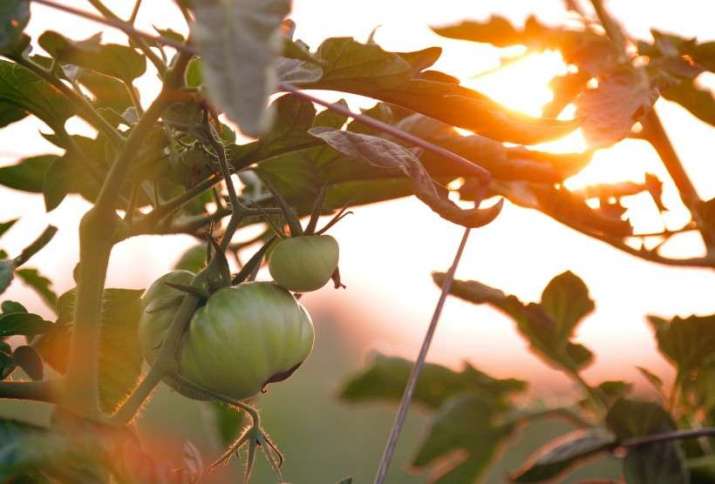
One more teaching? I can see some little bits of plastic amongst the clods of earth. They are remnants of our food compost—fragments that slipped in with the food waste and which are sticking out like sore thumbs. This is the sad legacy of the human race—micro-plastics clogging the oceans, entering our food chain, and choking wildlife. Chemicals are poisoning the Earth. What is the message for me here? I am all too aware of the climate and ecological crisis. Since my “big awakening” a few years ago I have become deeply involved in eco-activism and we also speak about the Earth in the Buddhist practice we offer. Although, I have been avoiding articles and reports about fresh environmental horrors over the past few months because I don’t quite have the stomach for it.
Maybe this is my final teaching, which I am reluctant to accept. I can’t look away from the bright scraps of plastic, however hard I try. They glint in the sunshine and demonstrate their permanence. I can see that it is a part of my eco-activism to occasionally examine the pieces of plastic and remember what we have done and what we are doing. It is a part of my Dharma work to grieve for the Earth, and to feel angry on her behalf. This emotional work transmutes into action—I can take it with me when I do my daily vigil, when I meet with other eco-activist Buddhists, and when I get involved in my next act of civil disobedience. The plastic reminds me not to look away.
I am finishing this piece by bowing to the vegetable patch, my wise teacher. I am grateful for the profound and incomprehensible Dharma it offers; I know that I will never get to the bottom of this Dharma, or be able to pin it into words. The Dharma is inestimably bigger than me. I’m also grateful for the few lessons I’ve taken from it today, like learning some basic adding up and subtracting from a genius mathematician. I hope I can pass some of this Dharma on. Maybe to the robin sitting on the bench, maybe to the man next to me in the supermarket queue, maybe to the vegetable patch itself. We continue our dance—one minute absorbing the light, and the next reflecting it.
References
“Jijuyu Zanmai” by Eihei Dogen Zenji in Abe, Masao. 2010. The Heart of Dogen’s Shobogenzo. Albany, NY: State University of New York Press.




